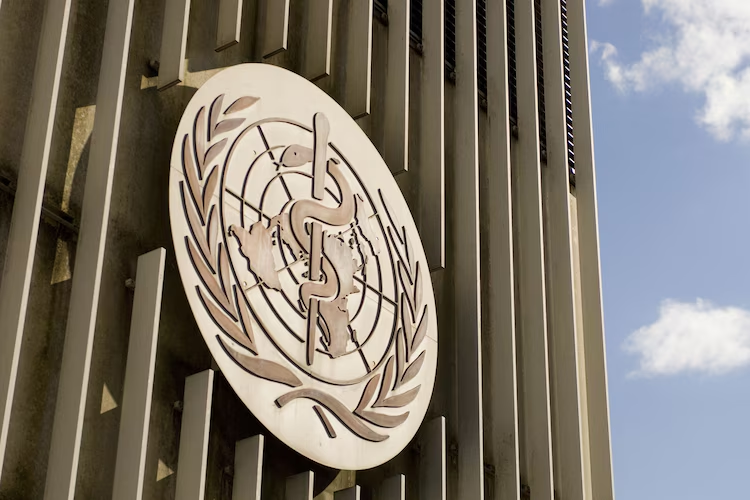Congo Disease Deaths | Mysterious Illness Claims Over 50 Lives in Congo Within Hours
Congo Disease Deaths– In early 2025, the Democratic Republic of Congo (DRC) faced a perplexing health crisis as a mysterious illness rapidly claimed the lives of over 50 individuals. The disease, characterized by swift onset and severe symptoms, has left health officials and communities scrambling for answers. This article delves into the outbreak’s timeline, symptoms, potential causes, and the ongoing efforts to identify and contain the disease.

Outbreak Timeline
Initial Cases in Boloko Village
The outbreak was first reported on January 21, 2025, in Boloko village, located in the Bolomba health zone of northwestern DRC. The initial cases involved three children under five who developed severe symptoms after consuming a bat carcass. Tragically, all three succumbed to the illness within 48 hours. This incident raised immediate concerns about a potential zoonotic origin of the disease.
Rapid Spread to Bomate Village
By February 9, 2025, the illness had surfaced in Bomate village within the Basankusu health zone. The number of cases escalated quickly, with 419 reported infections and 53 deaths by mid-February. The rapid progression from symptom onset to death, often within two days, has alarmed health professionals and the local population alike.
Symptoms and Disease Progression
Early Manifestations
Patients initially present with high fever, severe headaches, chills, and general malaise. These flu-like symptoms can easily be mistaken for common infections, which complicates early diagnosis and intervention.
Advanced Symptoms
As the disease progresses, patients experience gastrointestinal distress, including vomiting and diarrhea. Notably, many cases exhibit hemorrhagic manifestations such as nosebleeds, vomiting blood, and internal bleeding. The swift deterioration of health, leading to death within 48 hours in many instances, underscores the virulence of this illness.

Investigative Efforts and Challenges
Testing for Known Pathogens
Health authorities, including the World Health Organization (WHO), have undertaken extensive testing to identify the causative agent. Samples from affected individuals have been tested for Ebola and Marburg viruses, both known to cause hemorrhagic fevers. To date, all tests have returned negative results, ruling out these pathogens as the source of the outbreak.
Consideration of Other Causes
Given the negative test results for common hemorrhagic viruses, investigators are exploring alternative causes. Malaria has been detected in some patients; however, it does not fully explain the hemorrhagic symptoms observed. Other potential causes under consideration include:
- Foodborne Illnesses: The initial cases’ link to bat consumption suggests a possible toxin or pathogen transmitted through food.
- Other Viral Hemorrhagic Fevers: Less common viruses endemic to the region are being investigated.
- Bacterial Infections: Severe bacterial infections could present with similar symptoms and are part of the differential diagnosis.
Public Health Response
Immediate Interventions
In response to the outbreak, local and international health agencies have mobilized to provide medical supplies, deploy healthcare workers, and establish isolation units to manage and contain the spread. Public awareness campaigns are underway to educate communities about the potential risks associated with consuming bushmeat and the importance of seeking medical attention promptly.
Long-Term Strategies
Efforts are also focused on strengthening surveillance systems to detect and respond to such outbreaks more effectively in the future. This includes training local healthcare providers, improving laboratory capacities for quicker diagnosis, and enhancing communication networks to disseminate critical information swiftly.
Conclusion
The mysterious illness in the DRC presents a significant public health challenge, with its rapid onset and high fatality rate. While the exact cause remains unidentified, ongoing investigations and interventions aim to uncover the source and halt the spread. Continued support and collaboration among local communities, health authorities, and international organizations are crucial in addressing this crisis and preventing future outbreaks.
for quick recipe
Subscribe to our Page!
FAQs
- What is the current death toll of the mysterious illness in the DRC?
- As of mid-February 2025, the illness has resulted in 53 deaths out of 419 reported cases.
- What are the primary symptoms of this disease?
- Initial symptoms include high fever, severe headaches, and chills, progressing to vomiting, diarrhea, and hemorrhagic manifestations such as nosebleeds and internal bleeding.
- Has the causative agent of the illness been identified?
- No, tests for known hemorrhagic viruses like Ebola and Marburg have been negative. Investigations are ongoing to determine the exact cause.
- Is there a link between the illness and the consumption of bushmeat?
- The initial cases involved children who consumed a bat carcass, suggesting a potential link. However, further studies are needed to confirm this connection.
- What measures are being taken to control the outbreak?
- Health authorities have deployed medical supplies, established isolation units, and initiated public awareness campaigns to educate communities about the risks and preventive measures.







